Importance of selecting the right blade material for camping knife
Choosing the right blade material for camping knife for you is vital. It determines the knife’s durability and performance in various outdoor activities.
The perfect blade material ensures that your knife can withstand the demands of camping. It provides you with a reliable tool to tackle any task. Whether you need a blade that excels in slicing, chopping, or piercing, selecting the ideal material is crucial.
With the right blade material, you can feel confident. And your camping knife will endure the challenges of the wilderness and enhance your outdoor adventures.
Table of Contents
Key factors to consider when selecting the blade material for camping knife
- Durability and Strength: Evaluate the blade material’s resistance to wear, corrosion, and impact. Look for materials that can withstand the demands of outdoor use and maintain their structural integrity over time.
- Edge Retention and Sharpness: Consider the blade material’s ability to hold a sharp edge and its ease of sharpening. Look for materials that offer a good balance between edge retention and sharpening convenience.
- Performance in Various Environments: Assess how the blade material performs in different weather conditions, such as humidity or extreme temperatures. Consider its suitability for specific camping tasks, like slicing, chopping, or piercing.
- Budget Considerations: Consider your budget and examine the available options within that specific range. Remember that different blade materials come with varying price points. So finding a balance between cost and desired qualities is important.
- Personal Preferences: Consider your individual preferences, such as weight, maintenance requirements, and aesthetic appeal. Select a blade material that aligns with your specific camping needs and overall outdoor experience.

Understanding Different Blade Materials
1. Stainless Steel
Advantages and characteristics:
- Stainless steel blades are highly resistant to corrosion. It makes the knives suitable for outdoor use.
- They need less maintenance than other blade materials, as they do not rust easily.
- Stainless steel blades offer good strength and durability for camping tasks.
Popular stainless steel options for camping knives:
- 440C stainless steel: Known for its high wear resistance, toughness, and good edge retention.
- 154CM stainless steel: Offers excellent corrosion resistance, ease of sharpening, and durability.
- VG-10 stainless steel: Known for its exceptional sharpness, corrosion resistance, and toughness.
Performance considerations:
- Stainless steel blades may be less hard compared to other materials, affecting edge retention.
- They may require more frequent sharpening compared to harder blade materials.
- Some stainless steel options provide better performance in specific weather conditions and tasks.
2. Carbon Steel
Advantages characteristics:
- Carbon steel blades excel in both sharpness and edge retention.
- They are known for their exceptional strength and durability, making them suitable for demanding outdoor use.
- Carbon steel blades can be easier to sharpen compared to other materials.
Pros and cons of carbon steel for outdoor use:
Pros:
- High hardness makes carbon steel blades less prone to chipping and breaking.
- Excellent performance in tasks like woodcutting and bushcraft due to their toughness.
Cons:
- Carbon steel blades are more prone to corrosion. Preventing rust necessitates regular maintenance.
- They can stain and discolor if not properly cared for after use.
Maintenance requirements and considerations:
- Carbon steel blades need regular cleaning and drying after use to prevent corrosion.
- Applying a protective coating or oil can help cut rusting.
- It’s important to avoid leaving carbon steel blades wet or exposed to moisture for extended periods.
Note: Consider the climate, intended usage, and your ability to properly maintain carbon steel blades before making your selection for a camping knife.
3. High Carbon Stainless Steel
Combination of stainless steel and carbon steel properties:
- High carbon stainless steel is a hybrid blade material. It combines the best of stainless steel and carbon steel properties.
- It contains a higher carbon content than typical stainless steel, which enhances its hardness and edge retention.
- The stainless steel component provides corrosion resistance. And it reduces the need for frequent maintenance.
Benefits for camping knife applications:
- High carbon stainless steel blades offer exceptional sharpness and durability, making them suitable for various camping tasks.
- They provide excellent cutting performance. They allow for efficient slicing, chopping, and piercing in outdoor situations.
- The corrosion resistance of stainless steel in high carbon stainless steel blades ensures their longevity in outdoor environments.
Notable high carbon stainless steel options:
- 14C28N: Known for its excellent edge retention, high corrosion resistance, and ease of sharpening.
- AUS-8: Offers great balance between hardness, toughness, and corrosion resistance.
- CPM S30V: Features exceptional wear resistance, toughness, and edge retention, ideal for rugged outdoor use.
Note: High carbon stainless steel blades provide a desirable combination of strength, durability, and corrosion resistance. First Consider your specific camping needs and the performance characteristics of these options. Then select the right high carbon stainless steel blade for your camping knife.
4. Other Blade Materials
-
Ceramic blades:
- Ceramic are known for their exceptional hardness and sharpness.
- They offer excellent resistance to wear and corrosion.
- Ceramic blades can retain their sharp edge for a longer time compared to traditional steel blades.
-
Damascus steel:
- Damascus steel blades are characterized by their beautiful and distinctive patterns.
- They are forged by layering and folding different types of steel together.
- Damascus steel blades typically exhibit excellent strength, durability, and sharpness.
-
Titanium coatings:
- Titanium coatings are often used to enhance the performance of steel blades.
- They provide increased resistance to scratching, wear, and corrosion.
- Titanium coatings can improve the overall durability and lifespan of the blade.
Note: Ceramic blades, Damascus steel, and titanium coatings offer unique advantages. They may have specific considerations for usage, maintenance, and price. It’s important to evaluate these factors in relation to your specific camping needs before choosing a blade material.
Factors to Consider in Blade Material Selection
1. Durability and Strength
Resistance against wear, corrosion, and impact:
- It is important to choose a blade material that offers resistance against wear. It means it can withstand repeated use without significant damage.
- Corrosion resistance is crucial to prevent the blade from rusting when exposed to moisture or harsh environmental conditions.
- The blade material should also exhibit sufficient impact resistance to withstand forces. It impacts without breaking or chipping.
Blade failure risks when durability is compromised:
- When durability is compromised, there is an increased risk of blade failure during use.
- A blade that lacks durability may chip, break, or dull quickly, rendering it ineffective for its intended purpose.
- Blade failure risks can impact your safety and the success of your outdoor activities. It’s essential to focus on durability and strength in blade material selection.
Note: Consider the demands of your intended use and the potential environmental factors. It can affect the blade’s durability and strength. By choosing a blade material with excellent resistance against wear, corrosion, and impact, you can ensure a reliable and long-lasting tool for your outdoor adventures.
2. Edge Retention andness
Blade hardness and its impact on edge retention:
- Blade hardness plays a crucial role in determining the edge retention of a knife.
- Harder blade materials tend to retain their sharpness for a longer time before requiring resharpening.
- When selecting a blade material, consider the desired balance between hardness and other factors like toughness and ease of sharpening.
Ease of sharpening and maintenance considerations:
- Sharpening is easier with certain blade materials compared to others.
- Consider the maintenance requirements and your ability to sharpen the blade effectively.
- Blade materials that are easier to sharpen and maintain can reduce the effort and time required for blade upkeep.
Note: Strike a balance between blade hardness for better edge retention and ease of sharpening for convenience. Determine your sharpening skills and willingness to maintain the blade’s sharpness. Then select a blade material that your needs.
3. Performance in Various Environments
Blade material suitability for different weather conditions:
- Some blade materials are better suited for specific weather conditions. For example, stainless steel is more resistant to corrosion. It is suitable for humid or wet environments.
- Consider the environmental factors, such as humidity, temperature, and exposure to moisture, when selecting a blade material for outdoor use.
- How blade materials handle like slicing, chopping, piercing:
- Different blade have varying characteristics that affect their in different tasks. Some blade materials, like carbon, offer excellent sharpness durability. It makes well-suited for tasks like slicing and.
- Other blade materials, like stainless steel, may provide better resistance to impact. They are more suitable for tasks that involve piercing or stabbing.
Note: When choosing a blade material, consider the intended tasks and the environmental conditions you are likely to encounter. This will help ensure that the selected blade material delivers optimal performance. It meets your specific requirements in various environments.
4. Budget Considerations in Blade Material Selection:
Cost variations among different blade materials:
- Blade materials vary in cost due to factors like availability, production processes, and performance characteristics.
- Some materials, like stainless steel, are generally more affordable, while others, such as high-end Damascus steel or specialty alloys, can be more expensive.
Finding the right balance between budget and desired qualities:
- Consider your budget and focus on the qualities that are most important for your intended use.
- While high-end materials may offer superior performance, there are often budget-friendly options that can still meet your needs.
- Balancing desired qualities with your budget ensures you get the most value for your investment.
Note: When choosing a blade material, it’s important to consider your budget and strike a balance between cost and desired qualities. A thorough assessment of your needs and available options will help you make an informed decision. And it meets both your requirements and your budget constraints.
Matching blade material for camping knife to Your Needs
A. Food Preparation Cooking:
Blade materials suitable for kitchen tasks in the wilderness:
- Stainless steel blades are commonly used for food preparation due to their resistance to corrosion and easy maintenance.
- High carbon stainless steel blades offer a good balance of durability and sharpness. It is ideal for slicing and chopping food in camping situations.
Considerations for food safety and hygiene:
- Select a blade material that is easy to clean and maintain to ensure food safety.
- Look for materials with a smooth surface and good resistance to staining and bacterial growth.
B. Bushcraft and Survival:
Blade materials best suited for tough outdoor applications:
- Carbon steel blades are often preferred for their excellent durability, strength, and ability to hold an edge in rugged outdoor environments.
- High-quality stainless steel blades with improved hardness and toughness also offer reliable performance for bushcraft and survival tasks.
Resilience against hard use and potential abuse in survival situations:
- Choose blade materials known for their resilience and ability to handle demanding tasks without chipping or breaking.
- Consider materials like high carbon steel or specialized alloys designed for heavy-duty use.
C. Versatile Multi-Purpose Blades:
Blade materials that excel in various camping activities:
- High-quality stainless steel blades provide versatility for a wide range of camping activities. It includes cooking, woodwork, and general utility tasks.
- Damascus steel blades offer a blend of aesthetics and functionality. It is suitable for both functional and decorative purposes.
Balancing performance across different tasks:
- Look for blade materials that strike a balance between durability, sharpness retention, and ease of maintenance.
- Consider materials with a reputation for versatility and adaptability to different camping scenarios.
Note: Matching the blade material to your specific camping needs requires considering the tasks involved, anticipated conditions, and personal preferences. Understanding the qualities offered by different materials will help you select a blade that performs optimally in your chosen camping activities.
Conclusion:
We explored various factors such as durability, strength, edge retention, and performance in different environments. These factors highlight the importance of choosing a blade material that can withstand the demands of camping activities.
It’s essential to consider your personal preferences and selecting the blade material. Whether you focus on durability, sharpness retention, or ease of sharpening, finding the right balance is crucial to ensure your camping knife meets your specific requirements.
Regardless of the blade material chosen, the importance of maintaining and caring for your camping knife cannot be overstated. Regular cleaning and proper storage will help prolong the life and functionality of your blade. It provides you with a reliable tool for your camping adventures.
As you embark on your search for the perfect camping knife, take your time to consider the various aspects discussed in this blog post. By focusing on factors like durability, performance, and personal preferences, you can make an informed decision that will enhance your camping experience.
Remember, investing in a high-quality camping knife with the right blade material is a long-term investment in your outdoor gear. So choose wisely, maintain it well, and enjoy the benefits of a reliable camping companion on your adventures. Happy camping!
Md Ismail Hossen
- is a Professional & Trusted Outdoor Authority, provides a valuable insights & tips on Products.

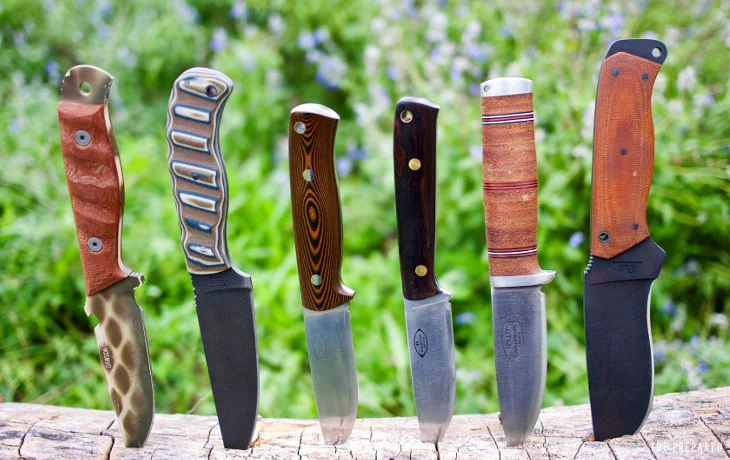

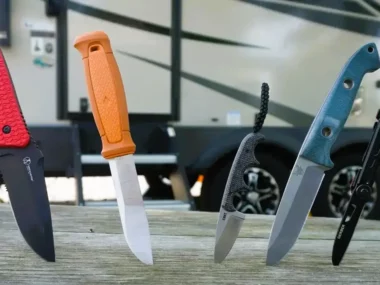
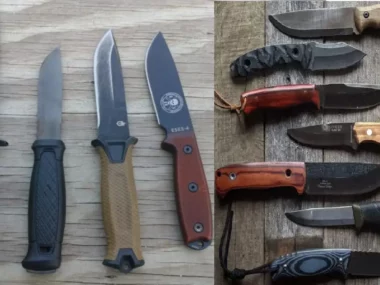
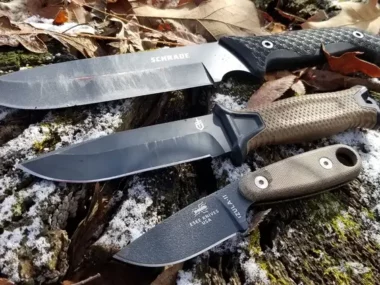

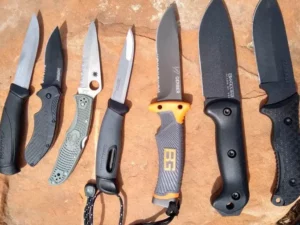
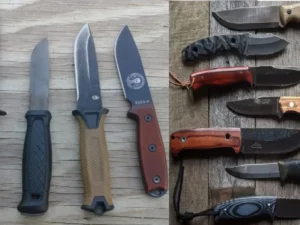
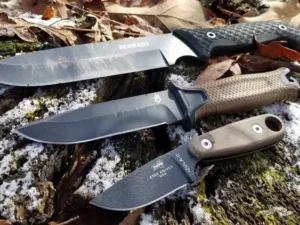
3 comments
I am very grateful about this post.
I am pleasure to you. I am best guided by this blog post.
Сессия близко?
Полезные советы для студентов — на этом сайте